![]()
![]()
![]()
Use LEFT and RIGHT arrow keys to navigate between flashcards;
Use UP and DOWN arrow keys to flip the card;
H to show hint;
A reads text to speech;
56 Cards in this Set
- Front
- Back

|
Spotted Horses and Human Hands, Peche-Merle Cave, Prehistoric art |
|

|
Woman from Willendorf, Prehistoric art |
|

|
Bird-Headed Man With Bison, Lascaux cave, prehistoric art |
|
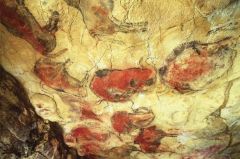
|
Bison, Ceiling at Altamira, Prehistoric art |
|
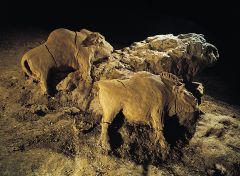
|
Bison, Le Tuc d'Audoubert, Prehistoric Art |
|
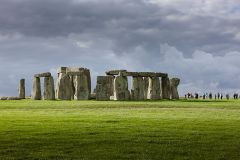
|
Stonehenge, Prehistoric Art. |
|
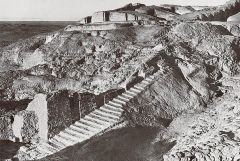
|
Ruins of the Anu Ziggurat and White Temple, Mesopotamian art |
|
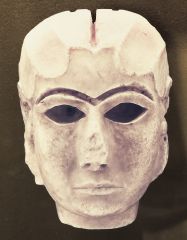
|
Head of a Woman, From Uruk, Mesopotamian art |
|
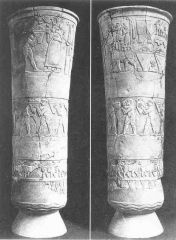
|
Carved Vessel, From Uruk, Mesopotamian art |
|

|
Twelve Votive Figures, From the square temple, Eshnunna, Mesopotamian art. |
|
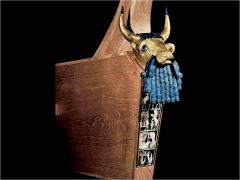
|
The great Lyre with bulls head, Mesopotamian art. |
|
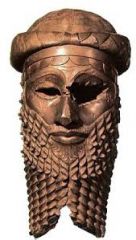
|
Head of a Man (known as an Akkadian ruler), Mesopotamian art |
|
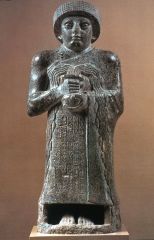
|
Votive statue of Gudea, from Girsu, Mesopotamian art. |
|
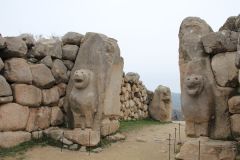
|
Lion Gate, From Hattusha, Ancient near eastern art. |
|

|
Assurnasirpal II Killing lions, From Kalhu, Mesopotamian art. |
|
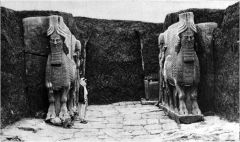
|
Guardian Figures at gate A of the Citadel of Sargon II during its excavation, Mesopotamian art. |
|
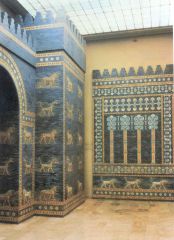
|
Ishtar gate and throne room wall, babylon, Mesopotamian art. |
|

|
Darius and Xerxes Receiving Tribute, from Persepolis, Ancient near eastern art. |
|

|
Funerary mask of Tutankhamen, Egyptian art. |
|
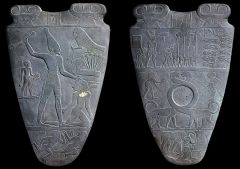
|
The palette of Narmer, Egyptian art. |
|
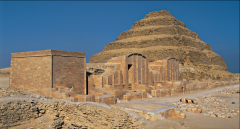
|
Imhotep, The Step pyramid and sham buildings, Funerary Complex of Djoser, Saqqara, Egyptian art. |
|
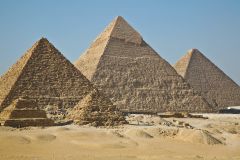
|
Great pyramids of Giza, Egyptian Art. |
|
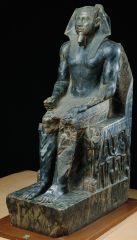
|
Khafre, Egyptian art. |
|
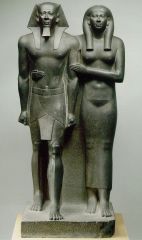
|
Menkaure and a Queen, Probably Khamerernebty II, Egyptian art. |
|
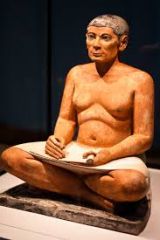
|
Seated Scribe, Egyptian art. |
|
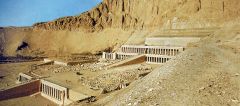
|
Ti watching a hippopotamus hunt, Egyptian Art |
|
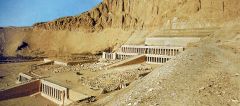
|
Funerary temple of Hatshepsut, Dier El-Bahri, Egyptian Art. |
|
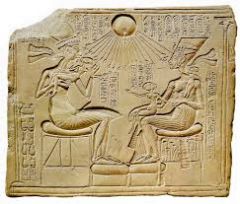
|
Ahkenaten and his family, Egyptian art. |
|
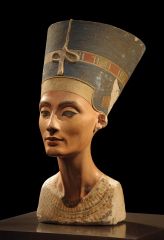
|
Thutmose, Nefertiti, Egyptian art. |
|
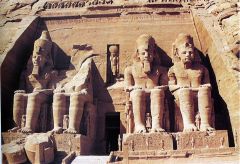
|
Temple of Ramses II, from Abu Simbel, Egyptian art. |
|
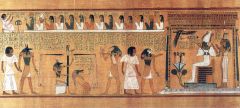
|
Judgement of Hunefer before Osiris, From book of the Dead, Egyptian art. |
|
|
5 functions for cave paintings |
1. hunting/magic rituals 2. totematic/iniation rites 3. Teaching of hunting techniques 4. Shaminism 5. Food creation theory |
|
|
4 functions of Stonehenge |
1. Astronomical Observatory 2. Seasonal Calendar 3. Religious/Rituals 4. Funerary/Ancient Worship |
|
|
4 different kings of Egyptian Temples |
1. Mastaba 2. Stepped pyramid 3. Straight sided pyramid 4. Rock cut tomb |
|
|
3 main places for cave paintings and locations |
1. Chauvet (France) OLDEST 2. Lascaux (France) 3. Altamira (Spain) |
|
|
Dolmen |
Above ground burial. Menhirs capped with lintel |
|
|
Menhir |
One upright monolith |
|
|
Monolith |
Large Rocks |
|
|
Theocratic Socialism |
Local god who rules city states |
|
|
Heraldic Composition |
One central form flanked by two identical forms |
|
|
Zoroastrianism |
Persian Religion. 2 gods, but only one was worshipped. |
|
|
Ahura Mazda |
God worshipped by zoroastrianism |
|
|
Imhotep |
First recorded architect. Made stepped pyramid for Djoser |
|
|
Mortuary Temple |
Where pharaohs were worshipped after death |
|
|
Pylon Temple |
Where pharaohs would go to worship gods |
|
|
Vertical Recession |
Vertical placement. When something was closer to the top of the composition, it was meant to be further away. |
|
|
Cuneiform |
Earliest form of writing. Sumerian |
|
|
Ziggurat |
Stepped platform with temple on top |
|
|
Cella |
"Holy of Holies" Holiest part of the temple. |
|
|
Wooden Inlay |
Bits of Shell or colored stone cut into wooden objects. |
|
|
Frieze |
A band of relief sculptures or paintings. |
|
|
Ka |
Part of the soul that lives forever |
|
|
Paleolithic vs Neolithic |
Paleolithic- During the last ice age. People would move around a lot.
Neolithic- Much warmer. Forests started to appear. People stayed in the same place and started more civilizations. |
|
|
Egyptian dates |
3150 BCE - 1075 BCE |
|
|
Mesopotamian dates |
3500 BCE - 250 CE |
|
|
7 Mesopotamian Cultures |
1. Assyrians 2. Hitties 3. Sumerians 4. Akkadians 5. Neo-babylonians 6. Babylonians 7. Persians |

